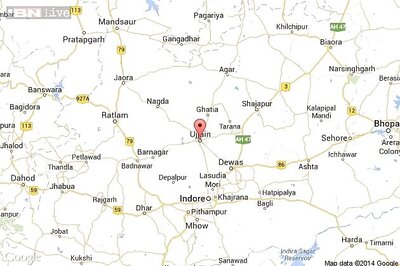
views
Lucknow: The killer earthquake in Nepal has rung alarm bells across Uttar Pradesh where 50 of the 75 districts have been found to be quake-prone.
National Institute of Disaster Management (NIDM) under the Ministry of Home Affairs has identified 29 districts under Zone-IV, considered to be the high seismic zone.
The NIDM has divided the state into three zones, with areas bordering Nepal and Uttarkashi in Uttarakhand figuring in Zone-IV.
The intensity of the tremors have led experts to rethink on how safe is the state from quakes.
While Saturday's quake measuring 7.9 on Richter scale that epicentred in Nepal left a trail of massive destruction in the Himalayan country, Uttar Pradesh felt bouts of aftershocks mostly in Barabanki, Sant Kabir Nagar and Gorakhpur districts. Badaun, Kushinagar, Shravasti and Balia were the other districts in the state affected by the tremors.
14 people had died in the quake in Uttar Pradesh.
Seismic expert and former Director of Geological Survey of India (GSI) V K Joshi apprehended that growing urbanisation in Uttar Pradesh might result in massive damage in terms of life and property in future.
"Luckily, this time the impact of tremors from Nepal was not so aggressive in UP," Joshi told.
It was the alluvium cover in the Indo-Gangetic Plain, which acted as a cushion and prevented large-scale damage in the state. In geological terms, the state falls in the "safe" zone as the alluvium cover acts a "shock absorber".
The districts falling in Zone-IV are Saharanpur, Muzaffarnagar, Baghpat, Bijnor, Meerut, Ghaziabad, Gautam Buddh Nagar, JP Nagar, Rampur, Moradabad, Bulandshar, Shravasti, Balrampur, Siddharth Nagar, Maharajganj, Kushinagar, and parts of Pilibhit, Shajahanpur, Kheri, Baharaich, Gonda, Mathura, Aligarh, Budaun, Bareilly, Basti, Sant Kabir Nagar, Deoria and Ballia.
Many are of the view that quake of this magnitude perhaps visited Uttar Pradesh for the first time in 80 years.The north-western belt seems to have been affected by the high magnitude of the tremors.
Earth scientists explain that the rocky surface below the alluvium cover of the Indo-Gangetic Plain has a thickness of about 2.5 km and around the Himalayan foothills its thickness increases to around 6 km.
"Emphasis should be on ensuring that high rise buildings are earthquake resistant," Joshi said. He said in case of high-rise buildings, the seller must give an earthquake resistant certificate.
"This norm is not being followed in the state, which is a matter of concern. Imagine if a school or hospital building collapses what will the enormity of the disaster," Joshi said.
Eminent earth scientist and expert in Himalayan Geology A R Bhattacarya said government must ensure that norms are followed strictly.
Bhattacharya said the faults or cracks in the rocky surface below the alluvium cover could have been activated by the magnitude of tremors.
Districts in moderate risk zone (Zone-III), include Sonbhadra, Chandauli, Ghazipur, Varanasi, Jaunpur, Azamgarh, Gorakhpur, Sultanpur, Rae Bareli, Faizabad, Unnao, Lucknow, Barabanki, Sitapur, Hardoi, Kannauj, Mainpuri, Firozabad, Etah, Mahamayanagar, Farukkabad, and parts of Mirzapur, Pratapgarh, Kanpurnagar, Auraiya, Etawah, Agra, Mathura, Aligarh and Pilibhit.
Zone-II (low damage risk zone) includes Lalitpur, Jhansi, Mahoba, Jalaun, Banda, Kausambi, Allahabad and parts of Fetehpur, Patapgarh and Mirzapur.


















Comments
0 comment